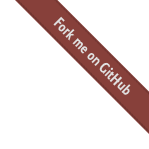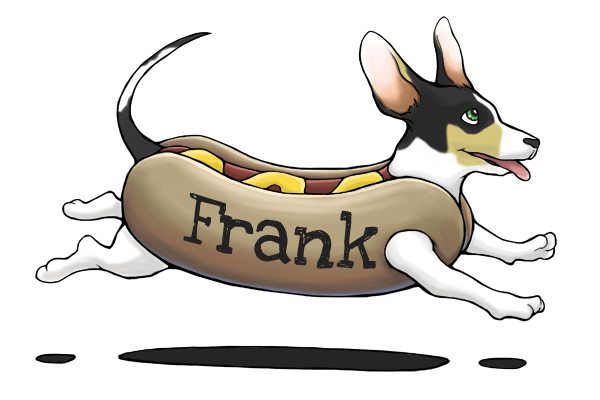Step Definitions
What’s this?
This page is intended to act as a place for useful Frank step definitions which aren’t quite standard enough to add to the core frank steps. Please feel free to contribute your own useful codez.
Counting specific items displayed on the App
This works for Waseem:
Then /^I should see (.*) apples$/ do |count|
apples = frankly_map( "label marked:'red apples'", 'tag' )
apples.count.should == count.to_i
endEditing a text field using the keyboard
(see this thread for details)
This works for Pete’s team:
When /^I use the keyboard to fill in the textfield marked
"([^\\"]*)" with "([^\\"]*)"$/ do |text_field_mark, text_to_type|
text_field_selector = "view marked:'#{text_field_mark}'"
check_element_exists( text_field_selector )
touch( text_field_selector )
frankly_map( text_field_selector, 'setText:', text_to_type )
frankly_map( text_field_selector, 'endEditing:', true )
endThis works for Martin:
When /^I use the keyboard to fill in the textfield marked
"([^\\"]*)" with "([^\\"]*)"$/ do |text_field_mark, text_to_type|
text_field_selector = "view marked:'#{text_field_mark}'"
check_element_exists( text_field_selector )
frankly_map( text_field_selector, 'becomeFirstResponder' )
frankly_map( text_field_selector, 'setText:', text_to_type )
frankly_map( text_field_selector, 'endEditing:', true )
end Simulating sending text and hitting return on the keyboard
This can be a useful workaround when dealing with the iOS keyboard. Thanks to Hezi Cohen and James Moore for this one!
def send_command ( command )
%x{osascript<<APPLESCRIPT
tell application "System Events"
tell application "iPhone Simulator" to activate
keystroke "#{command}"
delay 1
key code 36
end tell
APPLESCRIPT}
end
When /^I send the command "([^\\"]*)"$/ do |cmd|
send_command(cmd)
end
When /^I send the command "([^"]*)" (\d+) times$/ do |cmd, times|
i = 0
while i < times.to_i
send_command(cmd)
i += 1
end
end
When /^I send the following commands:$/ do |table|
table.hashes.each do |row|
steps "When I send the command \\"#{row['command']}\\"
#{row['times']} times"
send_command(row['command'])
end
endResetting the app to first launch state
Given /^I reset the (iphone|ipad) app$/ do |device|
steps "When I quit the simulator"
SDK = "4.3"
APPLICATIONS_DIR = "/Users/#{ENV['USER']}/Library/Application
Support/iPhone Simulator/#{SDK}/Applications"
USERDEFAULTS_PLIST =
"Library/Preferences/com.yourcompany.#{APPNAME}.dist.plist"
Dir.foreach(APPLICATIONS_DIR) do |item|
next if item == '.' or item == '..'
if File::exists?(
"#{APPLICATIONS_DIR}/#{item}/#{USERDEFAULTS_PLIST}")
FileUtils.rm "#{APPLICATIONS_DIR}/#{item}/#{USERDEFAULTS_PLIST}"
end
end
steps "Given I launch the #{device} app"
endTaking a screenshot of the app
Then /^I save a screenshot with prefix (\w+)$/ do |prefix|
filename = prefix + Time.now.to_i.to_s
%x[screencapture #{filename}.png]
endDeleting a table view cell
(see this thread for details)
When /^I delete the table view cell marked "([^"]*)"$/ do |mark|
raise "no table view cell marked '#{mark}' could be found to delete"
unless element_exists("tableViewCell label marked:'#{mark}'")
frankly_map( "tableViewCell label marked:'#{mark}' parent
tableViewCell delete", "tag" )
endSelecting from a UIPickerView
From http://groups.google.com/group/frank-discuss/browse_thread/thread/419a5f08d7ebb422
When /^I select (\d*)(?:st|nd|rd|th)? row in picker "([^\"]*)"$/ do |
row_ordinal, theview|
selector = "view:'UIPickerView' marked:'#{theview}'"
row_index = row_ordinal.to_i - 1
views_switched = frankly_map( selector,
'selectRow:inComponent:animated:', row_index, 0, false )
raise "could not find anything matching [#{row_ordinal}] to switch"
if views_switched.empty?
end Recording Video of your cucumber run
Put this into somewhere where it will be loaded by cucumber (e.g
create a file like Frank/features/support/recording.rb), then you can
use @record tag to record a specific scenario.
Around( '@record' ) do | scenario, block |
start_recording
block.call
stop_recording
endAdd this to the top of Frank/features/support/env.rb to record
everything in the whole cucumber run:
include Frank::Cucumber::FrankHelper
start_recording
at_exit do
stop_recording
endWe record the screen with a terminal showing the cucumber steps right beside the open simulator.
Two more tools you will probably want to use if you’re recording your whole test suite run:
- Timestamped Scenarios - show the timestamp in the cucumber output of when a scenario ran starting with the start of the test run. So if a scenario fails at 9:02 into your test run, then you know where to start watching the video.
- Slow Hand Cuke - a cucumber formatter to display the currently running step (by default cucumber displays steps after they have run, so you don’t see the currently running step)

 Testing With Frank
Testing With Frank
